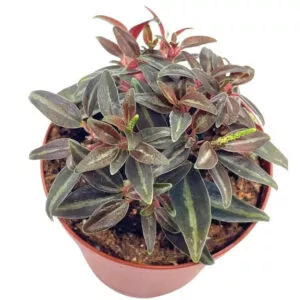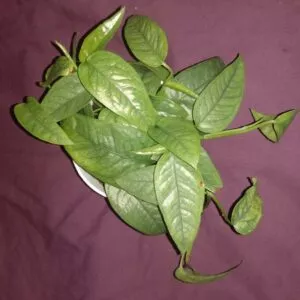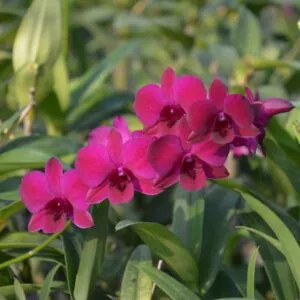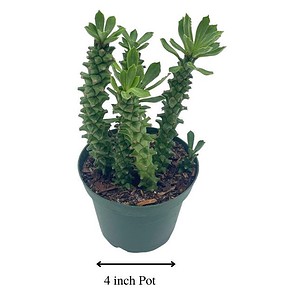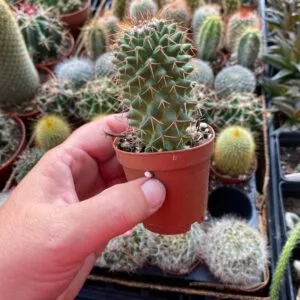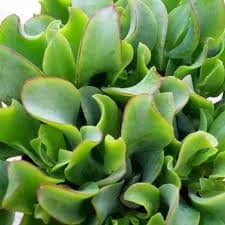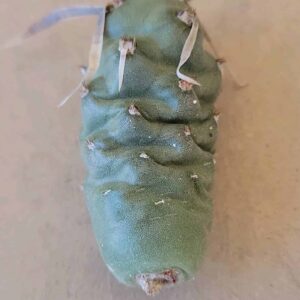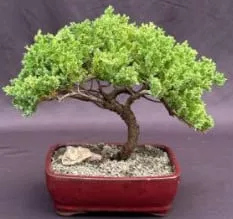No products in the cart.
Table of Contents
Did you know that the White mulberry tree has a long history of medicinal usage in Chinese medicine, with practically all sections of the plant being employed in some fashion? Antibacterial, astringent, diaphoretic, hypoglycaemic, odontalgic, and ophthalmic properties are all found in the leaves. Colds, influenza, eye infections, and nosebleeds are treated by taking them internally.
It’s a deciduous tree with a rounded shape that can reach 30-50 feet tall and wide. With time, it usually develops a wide-spreading crown. Since at least 2600 B.C., the leaves of this tree have been used in China.
Female trees produce sweet, edible blackberry-like fruits in June after fertilizing their blossoms. Fruits turn white or pink as they ripen, although they can also turn darker reds or purple-black. Birds are fond of fruits.
Serrate margins and irregular bases characterize the glossy, spherical, generally 2-3 lobed, dark green leaves. This tree is distinguished from red mulberry by its glossy leaf surfaces. The autumn hue is an unappealing yellow.
Interesting, isn’t it? And if this interests you, I know you want to grow these Mulberry trees in your backyard. And if that’s a yes, we’re here to teach you how to care for them! Read below to find it out.
Morus Alba Plant Care Basics

But before that, take a look at this plant’s overview. It is a big help in knowing more about this rare plant White mulberry.

Now that you’ve known this White mulberry Morus alba, let’s not delay any longer, and here are the essential tips in growing your Mulberry tree. Enjoy!!
Recommended Potting mix
The mulberry tree thrives in various soil types, including sandy, loamy, clay, and even rocky soils. They aren’t choosy in that aspect. But keep in mind that even though they can thrive in almost all varieties, well-drained soil should always be present.
They can also thrive in acidic and alkaline soils; however, they prefer a pH range of 5.0 to 5.7. Don’t worry if you reside in seaside settings because these Mulberry trees are extremely salt-tolerant and can thrive in coastal environments!
Lighting Requirement

To account for their broad and wild-growing root systems, all the species of Mulberry trees demand full light and must be spaced at least 15 feet apart. While the white and red types require 4 hours of direct, unfiltered sunshine in most cases, they can flourish in partial shade in some growing circumstances. So treating them as an outdoor plant will surely get them their maximum growth.
Because your tree will most likely be one of the taller species in your landscape once it reaches maturity, you shouldn’t be concerned about light when deciding where to plant it!
Watering Needs
Water newly planted White mulberry trees regularly to encourage the development of a robust root system. They should be able to get their water needs met from the environment once they’ve been established. You must guarantee that they receive at least 1 inch of water deep into the soil every week during dry months.
If the roots are allowed to dry out, the fruit will fall to the ground before ripening.
Mulberry trees are drought tolerant once established, yet extended dry weather might cause a reduction in fruiting or early berry dropping (before they’re fully mature).
In stock In stock In stock In stock
$6.99
Sold By:
BubbleBlooms
Peperomia Metallica, 2 inch, Rare Pep
Rated 4.81 out of 5 based on 279 customer ratings01
Sold By:
BubbleBlooms
$36.99
Sold By:
Cacti and Exotica
Euphorbia Trigona green | 6″ Pot
Rated 4.98 out of 5 based on 59 customer ratings00
Sold By:
Cacti and Exotica
$25.00
Sold By:
Soul Peace Gardens
Soul Peace Bundle-Cebu Blue
Only 2 available and it’s in 1 people’s basket
Sold By:
Soul Peace Gardens
$9.95
Sold By:
CTS Air Plants
Variegated String of Pearls Succulents
Sold By:
CTS Air Plants
Ideal Temperature & Humidity

Most mulberry trees are cold-hardy and may withstand temperatures as low as -25 degrees Fahrenheit (-31 degrees Celsius) during dormancy, depending on the species. However, they produce the most fruit when the temperature is between 68 and 86 degrees Fahrenheit (20 and 30 degrees Celsius).
Mulberries grow well in various conditions, including warm temperate, Mediterranean, subtropical, and tropical regions, where they can be cultivated as evergreens.
Necessary Fertilizer
During the first year of growth, mulberry trees should not be fertilized. It may be feasible to wait until after the second year of growth to fertilize them, depending on your soil test results.
You can use a balanced, slow-release fertilizer with an NPK ratio of 10-10-10 in late winter or early spring, just before new growth begins, once they are established. For every inch of trunk diameter, apply 1 pound of fertilizer.
If your mature tree is not displaying evidence of recent growth but is generally healthy and unaffected by stress, you may only need to apply nitrogen to meet its nutrient requirements.
Propagation
Ready to reproduce your White mulberry without costing too much money? Well, then let’s propagate Mulberry trees! Softwood cuttings may quickly propagate most Mulberry cultivars. It has a high success rate and is beneficial for propagating more challenging cultivars that don’t respond to hardwood cuttings.
Here’s how you will propagate Mulberry trees:
- Strip all the leaves except the top one or two from 6″ to 10″ cuts (cut leaves to a manageable size if they are very large).
- Stick a third of the way down into a decent growing medium after dipping the end in rooting hormone.
- Water thoroughly, then cover with a clear plastic bag, a plastic soft-drink bottle (with the bottom or top cut off), or anything else that will produce a “humidity dome.”
- It is not necessary for the “dome” to be totally airtight. Plastic bags should have a pea-sized hole, or two cut into them, but soft-drink bottles are fine because some air seeps in from where the bottle rests on the soil.
- The cuttings must be stored in the shade and never be exposed to direct sunlight (even for a couple of minutes).
- Cuttings should be well rooted in 4 to 8 weeks, after which more fresh air should be allowed to enter the “humidity dome.” Then you can transplant it into your preferred container.
Growth Zone

Mulberry trees that give fruit year after year can be found in Zones 5 through 10, which covers most of the United States. They can withstand both cold and hot conditions, and they are drought-resistant. In USDA zones 4b – 9b, A sturdy tree that can withstand temperatures as low as -32.8 degrees Fahrenheit (-36 degrees Celsius) thrives in subtropical and Mediterranean regions.
In stock In stock In stock Only 1 left in stock
$9.99
Sold By:
Succulent Oasis
Medium Succulent Plant – ‘Blue Elf’
Rated 4.84 out of 5 based on 352 customer ratings01
Sold By:
Succulent Oasis
Free Shipping
$34.99
Sold By:
Aloha Hawaii Orchids
$39.99Dendrobium Ladda Red Flower 2″ Pot
Rated 4.65 out of 5 based on 268 customer ratings00
Sold By:
Aloha Hawaii Orchids
$11.99
Sold By:
BubbleBlooms
Euphorbia Ritchiei, Stapelia Monadenium ritchiei, P.R.O. Bally Bruyns, 4 inch pot
Rated 4.81 out of 5 based on 279 customer ratings00
Sold By:
BubbleBlooms
Free Shipping
$1,039.36
Sold By:
BONSAI WORLD LLC
Hawaiian Umbrella Bonsai Tree Banyan Style (arboricola schefflera)
Sold By:
BONSAI WORLD LLC
Potting and Pruning
When you grow Mulberry trees, you’ll need to use a good quality potting medium that has been treated with nutrient-rich compost. Choose a conventional 5-gallon pot or a slightly larger 7-gallon pot, then upgrade to a larger pot every time the plant becomes root-bound. Later, depending on your area and the cultivar you’re cultivating, increase the pot size to 15-20-25 gallons.
In general, pruning in containers is less critical than pruning a Mulberry tree in the ground. When the tree is dormant during winter and not growing, it is the perfect time to prune it. You can prune once the ripening season is done. Regular or as needed, gentle pruning and trimming of the dead, damaged, diseased, and crossing branches can be done. Pruning occurs in tropical locations near the end of the summer, just before the rainy season begins.
Morus Alba Varieties and Similar Plants
Want to know more if there are similar plants like this Mulberry fruit? Don’t worry because we’ll also provide some of those beauties. If you’re unsure what Mulberry tree you have right now, the size of the tree, the size of the berries, and the location of the berries will all help you identify the type of mulberry you have or intend to plant!
Here are some of those:
- Morus rubra

The native red mulberry tree has rough leaves twice as long as Morus alba and has a coarse, hairy underside, making it a short-lived tree. When the fruit is ripe, it transforms from light green to red to dark purple. Red mulberry trees can be hard to come by in the nursery sector. From Massachusetts, southern Ontario, and Minnesota south to Florida and Texas, it is found in rich woodlands, bottomlands, and wood margins.
- Morus nigra

Morus nigra is a slender deciduous shrub or tree with a dense, spreading crown of many branches. They are also known as the Black mulberry trees that grow 40 feet tall, with dark purple (nearly black) fruit that ripens to be quite enormous.
- Morus australis

This variety, sometimes known as Korean mulberry, is modest, reaching only 20 to 30 feet in height at maturity. It has somewhat glossy light green foliage and fruit ranging from nearly white to deep red and purple.
In stock (can be backordered) In stock In stock In stock
Free Shipping
$19.99
Sold By:
Gar-Zen Botanical Design
Dracaena Song of India Plant Ships Free.
Rated 4.86 out of 5 based on 49 customer ratings00
Sold By:
Gar-Zen Botanical Design
$6.00
Sold By:
Smoot's Farm
Cactus Toluca Mammillaria Polythele 3 Inch Pot Live Plant
Rated 4.89 out of 5 based on 27 customer ratings00
Sold By:
Smoot's Farm
Free Shipping
$37.95 – $42.95
Sold By:
A&K Plants
Snake Plant Laurentii – Easy Care Indoor Plant with Yellow Edges | 6-inch pot
Only 6 available and it’s in 1 people’s basket Rated 4.95 out of 5 based on 66 customer ratings00
Sold By:
A&K Plants
$13.99
Sold By:
Succulent Oasis
$23.00Large Grafted ‘Moon Cactus’ Bright Pink | Adds color to your terrarium or garden
Rated 4.84 out of 5 based on 352 customer ratings00
Sold By:
Succulent Oasis
Morus Alba Plant Diseases & Pests
Unfortunately, you’ll have very few bug problems in your tree. You might see mites or mealybugs, but a strong stream of water from your garden hose will kill them. The other good news is that these bugs won’t do much damage to older trees since they’re sturdy enough to handle them, which is a good thing because treating a giant 50-foot tree is no easy task.
You can also use a horticultural oil like neem oil if you discover signs of an infection on a more fragile young sapling.
Even with the best of care, a mulberry can have popcorn disease, a fungal infection. This disease is named for the fact that it causes the fruit to expand and resemble popcorn. Infected berries will fall off the tree and should be removed as soon as possible to prevent the illness from spreading and affecting the harvest the following year.
You can treat the entire tree with a copper-based fungicide in the hopes of saving the fruit that isn’t diseased.
Frequently Asked Questions
Everbearing Mulberry tree can take two to three years to bear fruit in general. Then, if they are mature enough, edible fruit is produced from late spring to early summer, and it can be eaten right off the tree. Fruit does not ripen on the tree, so pick it when it is black and ready.
The Morus alba is a monoecious species. This means that individual flowers are male or female, but both sexes can be found on the same plant. In short, the plant reproduces on its own.
In most of North America, this species is considered environmentally invasive. Hybridization poses a hazard to the native Red Mulberry (Morus rubra). In Europe, it does not appear to be an issue.
You can now have your own Mulberry tree here at Plantly! Not just you can have your own plant, but we also offer faster transactions online! Message us directly, and let’s get started!!
Whether you want to buy, sell or simply reach out to other plant enthusiasts, Plantly is the right place to be!
-
$9.99Sold By: Succulent Oasis
In stock
Medium Succulent Plant – Ripple Jade
Rated 4.84 out of 5 based on 352 customer ratings03Sold By: Succulent Oasis -
Free Shipping$11.95Sold By: Cactucson
Only 2 left in stock
Tephrocactus Articulatus – Paper Spine Cactus Single cutting 3-5 inch
Sold By: Cactucson -
Free Shipping$222.09Sold By: BONSAI WORLD LLC
Only 1 left in stock
Juniper Bonsai Tree – Trained (juniper procumbens nana)
Sold By: BONSAI WORLD LLC
